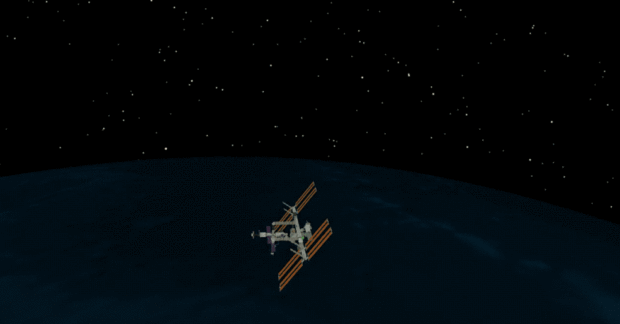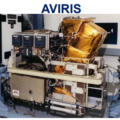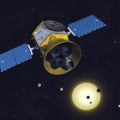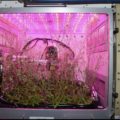The Total and Spectral Solar Irradiance Sensor (TSIS-1) became fully operational this month, after it was installed on the International Space Station.
TSIS-1 was launched with SpaceX Falcon 9 in December from Florida’s Cape Canaveral Air Force Station.
After two weeks it was extracted and integrated onto the International Space Station, where it will remain permanently.
The TSIS-1 was then tested by the University of Colorado Laboratory for Atmospheric and Space Physics (LASP) for more than two months.

The LASP team first examined the TSIS-1’s pointing platform, which directs solar instruments toward the sun, before testing the solar instruments themselves.
A statement from NASA explained the purpose the TSIS-1 will serve.
It said: ‘TSIS-1 studies the total amount of light energy emitted by the Sun using the Total Irradiance Monitor, one of two sensors onboard.
‘This sensor’s data will give us a better understanding of Earth’s primary energy supply and provide information to help improve models simulating the planet’s climate.
‘The monitor first started collecting science data – called “first light” – on January 11th after its doors were opened to fully view the Sun. The sensor extends a 40-year measurement of the sun’s total energy to Earth.’
The TSIS-1’s other sensor, the Spectral Irradiance Monitor, can measure the distribution of the sun’s energy over the visible, infrared and ultraviolet light regions.
This is significant because every light wavelength interacts with our atmosphere differently, the NASA statement explained.
It said: ‘For instance, spectral irradiance measurements of the Sun’s ultraviolet radiation are critical to understanding the ozone layer – Earth’s natural sunscreen that protects life from harmful radiation.
‘The sensor experienced first light on March 4th when full science data collection began. TSIS-1’s Spectral Irradiance Monitor extends a 15-year record of spectral irradiance measurements.’
So do you like to read such articles , consider liking our page on Facebook here , following us on Twitter here ,or if you love some visual treatment , we make some high quality videos on YouTube as well which you can view here . have a great day :). Visit our homepage HERE for the LATEST SCIENCE NEWS.




